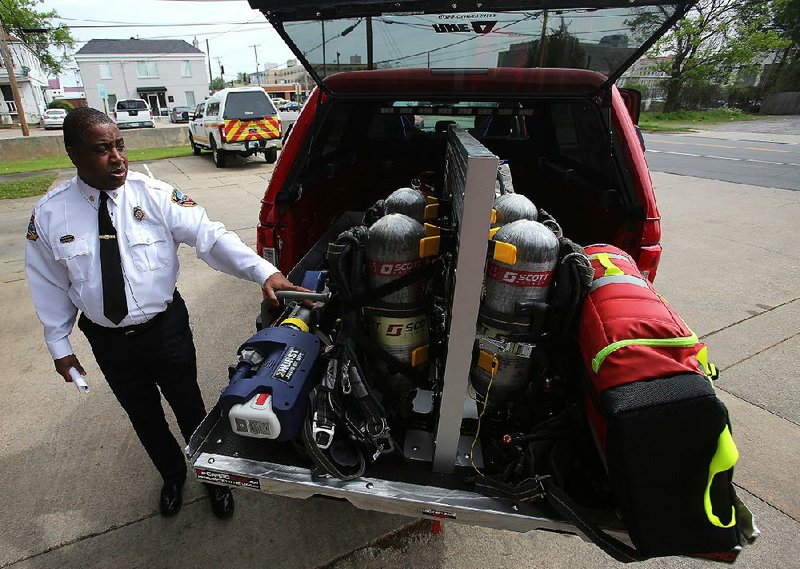The Little Rock Fire Department on Thursday deployed its first two streamlined emergency medical service response vehicles, which officials say they will use to respond to a range of emergencies while preserving the larger engines.
More than 60 percent of calls firefighters respond to are medical, yet the department has always responded with traditional fire trucks, Chief Delphone Hubbard said at a news conference Thursday. The two new red Ford F-250s emblazoned with the department logo provide a cost-efficient alternative, he said.
The response vehicles are about one-tenth of the cost of a pump truck, and their gas mileage is two to three times as good, the chief explained. Using them for medical calls where a full firefighting apparatus isn't necessary allows the department to reduce wear and tear on its pricier trucks.
"We're trying to be good stewards with the resources that have been made available to us," Hubbard said. "With the increasing number of medical calls, we have to be creative in the delivery of services."
The vehicles are packed with emergency medical gear, including defibrillators, as well as equipment for performing water rescues and forcible entry tools for extracting victims from car wrecks.
"We tried to set them up so they're ready for several different missions," Assistant Fire Chief Doug Coney said.
One will be stationed at the Central Fire Station at 624 S. Chester St. and take medical calls in the area bordered by Cantrell Road to the north, Main Street to the east, Roosevelt Road to the south and Woodrow Street to the west. The other's home will be Fire Station No. 9 at 1324 N. Shackleford Road, serving an area roughly bordered by Cantrell Road to the north and Kanis Road to the south.
The department chose to start running the alternate vehicles from those two stations because of their high call volume and garage space, said Capt. Jason Weaver, a public information officer for the department.
Capt. John Bavailablerand, who leads Fire Station No. 9, noted that the smaller trucks are easier to navigate on steeper roads and on long driveways. They have an off-road, all-weather capacity that traditional trucks don't have.
However, the vehicles' crews may assist pump trucks with fires beyond those areas while they're deployed if needed. Each is equipped with air packs, so firefighters who happened to be out on a medical call would be able to go into a house fire if necessary.
Hubbard said he got the idea for an alternative to traditional firetrucks from similar methods in Memphis, where he was previously a division chief, and in other communities.
A pump truck costs about $650,000, while the other vehicles are valued at between $60,000 and $70,000, Coney said.
Hubbard said Thursday he could not yet provide any numbers on the department's estimated cost savings, but that he planned to track numbers for the next six months.
He said he hopes to have a total of four alternative response vehicles in the next two years, with one serving each quadrant of the city.
Metro on 04/12/2019
